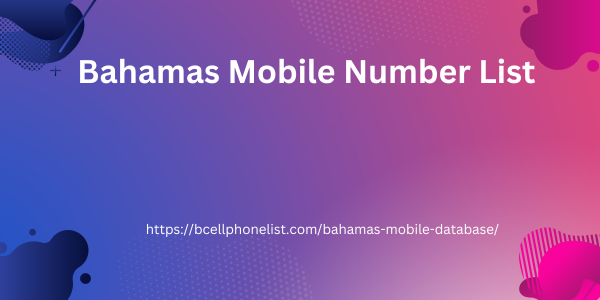Post by account_disabled on Mar 10, 2024 0:55:31 GMT -5
Create your buyer persona Before devising any strategy, you need to ensure you know exactly who you are dealing with. Therefore, the first step in this process is to create your buyer persona. This semi-fictional profile will be your guide when making decisions, you must keep it in mind throughout the process of mapping the journey and creating the customer experience. The buyer persona will bring data and information to help your business understand that each ideal customer has different needs and expectations, helping you identify and connect with these users. After all, it's much easier to communicate and please the people you know. Based on questionnaires and appropriate information, user personas created for your company will make it easier to discover the different ways people research that it will be easier to generate value and attract customers. When creating this semi-fictional profile, you aim to find out how your company can help this buyer persona achieve their goals, how your product or service solves a problem they are facing, what concerns they have, how you can do make them feel better and how you can make them see the value of your product.
To answer all these questions, it is important to ask the right questions, which will help your company to moe clearly identify the particularities of each persona. Do this through surveys of customers and potential customers, as Bahamas Mobile Number List well as analyzing previously collected consumption data. 2. Determine touchpoints Now that you know exactly who you want to reach, all their needs, wants and how they behave, it's time to determine the touchpoints. Identify where and how she finds your product or service or even where she sees your brand. Look beyond the website, think about social networks, paid ads, email marketing, blogs or even forums. This way, you will be able to have a more appropriate view of the actions carried out by your customers, the emotions or motivations behind them and how this point of contact makes them feel. Then, you will be able to understand the weaknesses or obstacles in your communication. 3. Create a graph for your non-linear map Now that you know who you want to reach and the possible points of contact, it's time to create a non-linear map. The options for creating this graph, but the important thing is that you establish the actions, thoughts and emotions at each stage.

Analyze and optimize We are reaching the stage of optimizing the customer journey. So, look at your map and try to find problems, see what can be improved, observe where you can optimize your communication. And then make the necessary changes to make the customer journey more fluid and assertive. It is important, throughout the process, to keep your buyer persona in mind. How to Optimize Non-Linear Customer Journeys 1. Identify customer behavior Survey key performance indicators, both customer and operational. You can evaluate, for example, Net Promoter Score (NPS), Customer Satisfaction Churn Rate, Retention Rate or even Customer Lifetime Value (CLV). These indices will give you a good tip on where to improve. 2. Optimize your website with web analytics Having a good website, responsive and fast, makes all the difference during the customer journey. No potential consumer wants to have to insist on completing a purchase on a page that takes a long time to load. Still at this point, it is worth creating a heat map of the website.
To answer all these questions, it is important to ask the right questions, which will help your company to moe clearly identify the particularities of each persona. Do this through surveys of customers and potential customers, as Bahamas Mobile Number List well as analyzing previously collected consumption data. 2. Determine touchpoints Now that you know exactly who you want to reach, all their needs, wants and how they behave, it's time to determine the touchpoints. Identify where and how she finds your product or service or even where she sees your brand. Look beyond the website, think about social networks, paid ads, email marketing, blogs or even forums. This way, you will be able to have a more appropriate view of the actions carried out by your customers, the emotions or motivations behind them and how this point of contact makes them feel. Then, you will be able to understand the weaknesses or obstacles in your communication. 3. Create a graph for your non-linear map Now that you know who you want to reach and the possible points of contact, it's time to create a non-linear map. The options for creating this graph, but the important thing is that you establish the actions, thoughts and emotions at each stage.

Analyze and optimize We are reaching the stage of optimizing the customer journey. So, look at your map and try to find problems, see what can be improved, observe where you can optimize your communication. And then make the necessary changes to make the customer journey more fluid and assertive. It is important, throughout the process, to keep your buyer persona in mind. How to Optimize Non-Linear Customer Journeys 1. Identify customer behavior Survey key performance indicators, both customer and operational. You can evaluate, for example, Net Promoter Score (NPS), Customer Satisfaction Churn Rate, Retention Rate or even Customer Lifetime Value (CLV). These indices will give you a good tip on where to improve. 2. Optimize your website with web analytics Having a good website, responsive and fast, makes all the difference during the customer journey. No potential consumer wants to have to insist on completing a purchase on a page that takes a long time to load. Still at this point, it is worth creating a heat map of the website.
